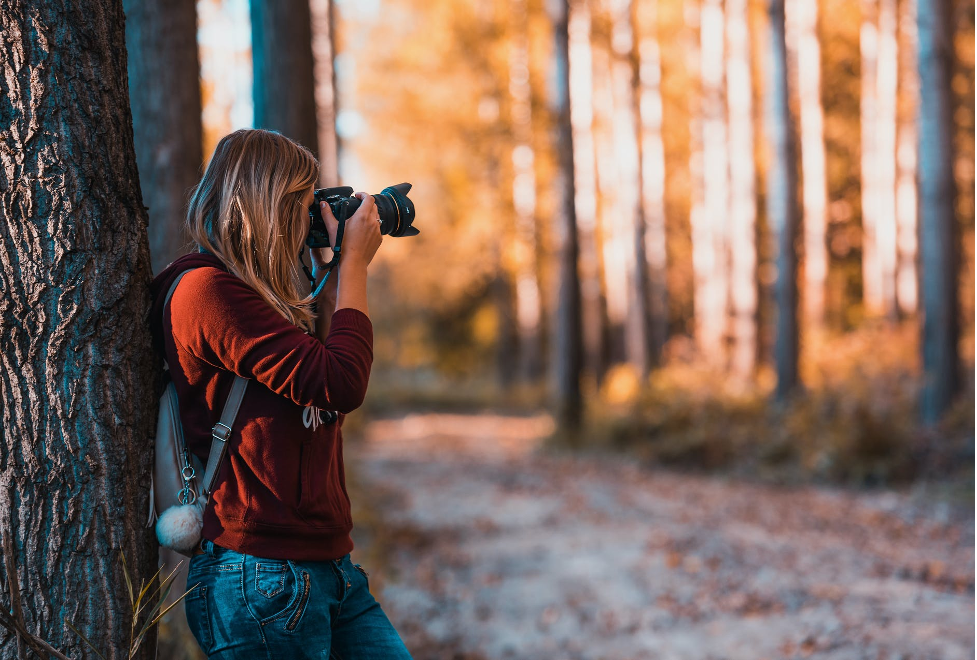If you're a photographer or a visual artist, licensing your work through reputable platforms can open up a world of opportunities. One such platform is Getty Images, a trusted name in stock photography. In this guide, we'll delve into the ins and outs of licensing your photos specifically with Getty Images. Whether you're new to the game or looking to expand your existing knowledge, this comprehensive overview will help you navigate the licensing process effortlessly.
Understanding Getty Images and Their Licensing Model

Getty Images is a leading global provider of digital media, specializing in stock photography, video content, and music. They cater to a diverse clientele, including media outlets, advertising agencies, and brands seeking high-quality visual content. Understanding Getty's licensing model is crucial if you want to maximize your earnings and ensure your work reaches the right audience.
Here's a quick rundown of the key aspects of their licensing model:
- Rights-Managed Licensing: This model is usually specific to particular uses. Prices vary based on factors such as the buyer's audience size, distribution length, and image exclusivity. If a buyer selects your image for a specific project, they’ll pay based on how they intend to use it.
- Royalty-Free Licensing: This option provides buyers with a broader scope of usage without needing to clear rights for each individual use. Once purchased, customers can use the image in various projects without incurring further fees, making it a straightforward choice for both parties.
- Exclusive vs. Non-Exclusive Licenses: An exclusive license means the buyer has sole rights to the image for a set period, while a non-exclusive license allows the photographer to sell the same image to multiple buyers.
By understanding these different licensing types, you can make informed decisions on how to price and distribute your photos. This knowledge could lead to more lucrative deals, helping you establish a viable income stream from your photography.
Also Read This: Sonic Speed: Accelerating the Tempo of a Song on Spotify – A How-To Guide
Preparing Your Photo Portfolio for Submission

When it comes to submitting your photos to Getty Images, preparation is key. A well-curated photo portfolio can significantly enhance your chances of getting noticed. Here are some essential steps you should take to ensure your portfolio is up to par:
- Select Your Best Work: Review your collection and choose high-quality images that reflect your unique style. Aim for diversity in subjects and techniques. Quality over quantity should be your mantra!
- Organize Your Portfolio: Group your photos into categories. Potential clients often look for specific themes, so having a categorized collection makes it easier for them to find what they're looking for.
- Ensure Technical Quality: Make sure your images are in focus, properly exposed, and free from any distracting artifacts. High resolution is a must; finalists should have a minimum of 300 DPI.
- Provide Descriptive Metadata: Include titles, descriptions, and relevant keywords that will help your photos get discovered. Think about what potential buyers would search for when looking for images!
- Edit and Enhance: Use editing software to bring out the best in your photos. But beware—overdoing it can ruin the natural essence of your image. Aim for a balance!
By following these steps, you'll create a stunning and cohesive photo portfolio that represents your artistic vision and meets Getty Images’ standards. Remember, first impressions count, and your portfolio is often the gateway to wider opportunities.
Also Read This: Understanding Getty Images Free License Options
Step-by-Step Process to Submit Your Photos
Now that you've got your photo portfolio in tip-top shape, it’s time to dive into the submission process. Here’s a handy step-by-step guide to simplify your journey with Getty Images:
- Create an Account: First things first, head over to the Getty Images website and sign up for an account if you haven't done so. A simple email, password, and some basic information are all it takes.
- Understand Submission Guidelines: Familiarize yourself with Getty’s submission criteria. This includes specifics on image sizes, formats, and restrictions. Following these guidelines is crucial for approval.
- Select Your Photos: Choose the images you want to submit from your prepared portfolio. Make sure they align with current market trends and Getty Images’ needs.
- Upload Your Images: Use the Getty Images uploader to add your photos to their platform. This process may take some time, especially if you have a large portfolio, so be patient!
- Add Metadata: For each image, write clear and concise titles, descriptions, and tags. This metadata helps buyers find your work, so make it as descriptive as possible.
- Review Your Submission: Before hitting that final submit button, go through your uploads one last time. Check for any errors in metadata and image quality.
- Wait for Approval: After submission, it’s time to play the waiting game. Getty Images will review your portfolio, and you’ll receive an email notification regarding your approval status.
And there you have it! By following this step-by-step process, you're well on your way to getting your photos licensed with Getty Images. Happy submitting!
Also Read This: how to outline an image photoshop
5. Tips for Increasing Your Chances of Acceptance
Getting your photo accepted by Getty Images can be quite competitive, but there are several strategies you can employ to improve your chances. Here are some helpful tips:
- Understand the Audience: Know who your audience is. Getty Images caters to various clients, from advertisers to media outlets. Tailor your images to meet their specific needs and preferences.
- Quality Over Quantity: It's better to submit a smaller number of high-quality images than to saturate your submissions with mediocre ones. Invest time in editing and enhancing your photos.
- Trendy and Timely: Keep an eye on current trends and topics that are gaining attention. Photos that resonate with popular events, themes, or social issues can significantly boost your acceptance rate.
- Metadata Matters: Accurately tag and describe your images with relevant keywords. This not only helps with discoverability but also shows that you understand the content’s context.
- Stay Updated: Familiarize yourself with Getty's guidelines and standards. They may change, so being well-informed can give you an edge.
Ultimately, persistence pays off. Keep refining your craft, stay current on market trends, and remember that each submission is a learning opportunity!
Also Read This: Download Likee Videos Without Watermark Using Online Tools or Apps
6. Common Mistakes to Avoid
Even seasoned photographers can stumble when it comes to submitting their work to Getty Images. Here’s a rundown of common pitfalls to steer clear of:
| Mistake | Consequences |
|---|---|
| Poor Image Quality | Images that are blurry or low resolution can be rejected outright. |
| Ignoring Licensing Agreements | Failing to understand different licensing types can lead to legal issues or rejection. |
| Inadequate Metadata | Poor tagging and descriptions can hinder searchability and acceptance. |
| Submitting Everything | Submitting a flood of images can dilute your portfolio. Quality is key! |
| Neglecting Market Research | Not staying updated on market demands can result in irrelevant submissions. |
Avoiding these common missteps can significantly enhance your likelihood of success. Double-check your work before submission, and always aim for excellence in everything you do!
Essential Guide to Licensing Your Photo with Getty Images
Getty Images is a leading provider of visual content, offering photographers and creators the opportunity to monetize their work through licensing. Whether you're a professional photographer or an aspiring artist, understanding how to effectively license your photos can enhance your visibility and income. This guide walks you through the essential steps and considerations for licensing your photos with Getty Images.
Here are the key aspects you should consider when licensing your photos:
- Understand Licensing Terms: Familiarize yourself with different types of licenses available, such as:
- Royalty-Free (RF): Buyers pay a one-time fee and can use the image for multiple projects without additional costs.
- Rights-Managed (RM): Buyers pay based on specific usage, such as duration, distribution, and exclusivity.
Steps to Submit Your Photos:
- Create a Getty Images account.
- Upload your images, ensuring to include metadata and keywords that make them easily searchable.
- Submit them for review. Getty's editorial team will assess quality and compliance with their guidelines.
Tips for Success:
| Tip | Description |
|---|---|
| High Quality | Ensure your images are of high resolution and well-composed. |
| Trending Topics | Research popular trends and themes to cater to current market demands. |
| Consistent Style | Establish a unique style to help your work stand out among competitors. |
By following the guidelines and tips in this essential guide, photographers can navigate the intricate world of photo licensing with Getty Images, turning their passion for photography into a sustainable business.
 admin
admin








